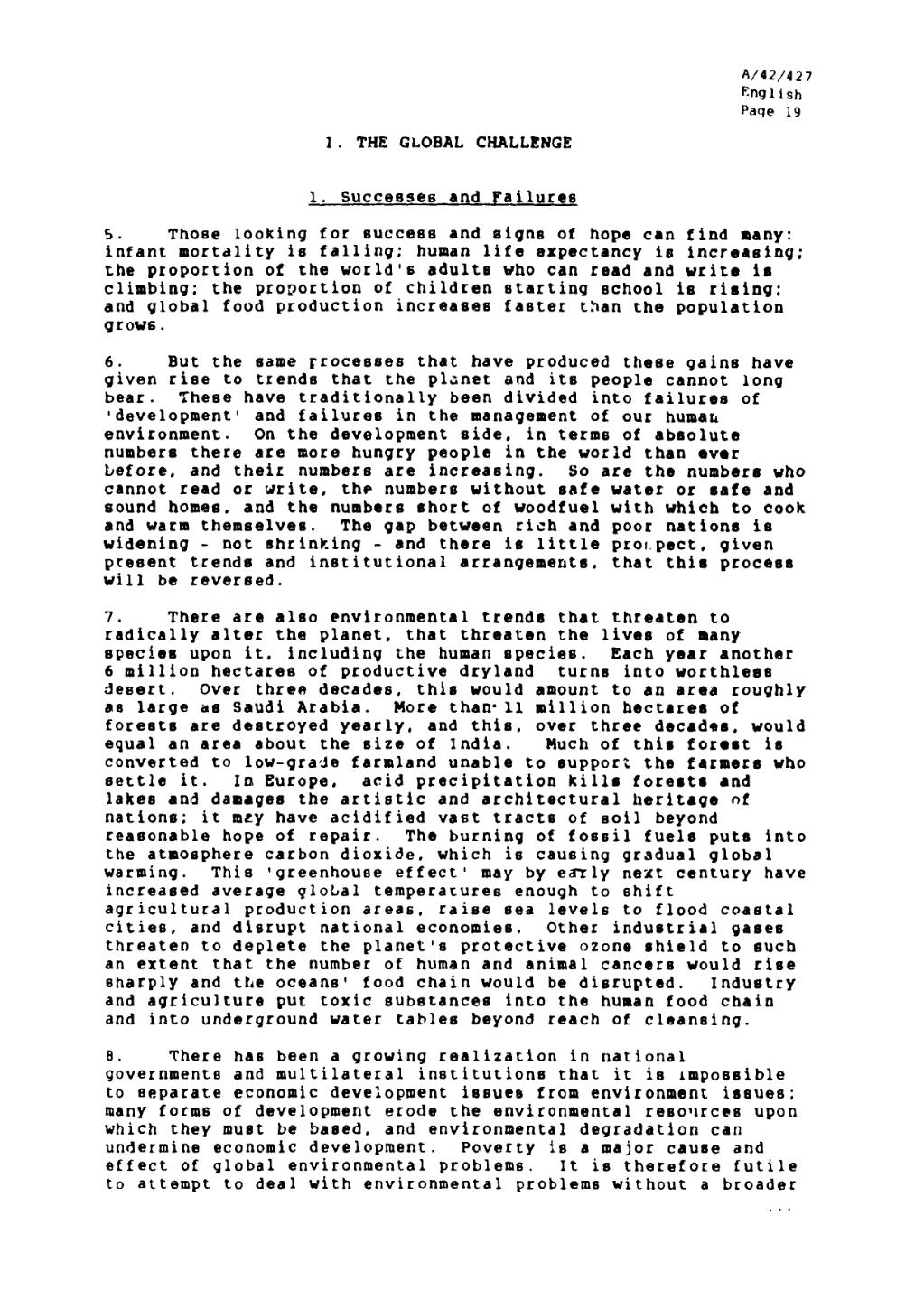A/42/427
English
Page 19
I. THE GLOBAL CHALLENGE
1. Successes and failures
5. Those looking for success and signs of hope can find many: infant mortality is falling; human life expectancy is increasing; the proportion of the world's adults who can read and write is climbing; the proportion of children starting school is rising; and global food production increases faster than the population grows.
6. But the same processes that have produced these gains have given rise to trends that the planet and its people cannot long bear. These have traditionally been divided into failures of "development" and failures in the management of our human environment. On the development side, in terms of absolute numbers there are more hungry people in the world than ever before, and their numbers are increasing. So are the numbers who cannot read or write, the numbers without safe water or safe and sound homes, and the numbers short of woodfuel with which to cook and warm themselves. The gap between rich and poor nations is widening—not shrinking—and there is little prospect, given present trends and institutional arrangements, that this process will be reversed.
7. There are also environmental trends that threaten to radically alter the planet, that threaten the lives of many species upon it. including the human species. Each year another 6 million hectares of productive dryland turns into worthless desert. Over three decades, this would amount to an area roughly as large as Saudi Arabia. More than 11 million hectares of forests are destroyed yearly, and this, over three decades, would equal an area about the size of India. Much of this forest is converted to low-grade farmland unable to support the farmers who settle it. In Europe, acid precipitation kills forests and lakes and damages the artistic and architectural heritage of nations; it may have acidified vast tracts of soil beyond reasonable hope of repair. The burning of fossil fuels puts into the atmosphere carbon dioxide, which is causing gradual global warming. This 'greenhouse effect' may by early next century have increased average global temperatures enough to shift agricultural production areas, raise sea levels to flood coastal cities, and disrupt national economies. Other industrial gases threaten to deplete the planet's protective ozone shield to such an extent that the number of human and animal cancers would rise sharply and the oceans' food chain would be disrupted, industry and agriculture put toxic substances into the human food chain and into underground water tables beyond reach of cleansing.
8. There has been a growing realization in national governments and multilateral institutions that it is impossible to separate economic development issues from environment issues; many forms of development erode the environmental resources upon which they must be based, and environmental degradation can undermine economic development. Poverty is a major cause and effect of global environmental problems. It is therefore futile to attempt to deal with environmental problems without a broader
